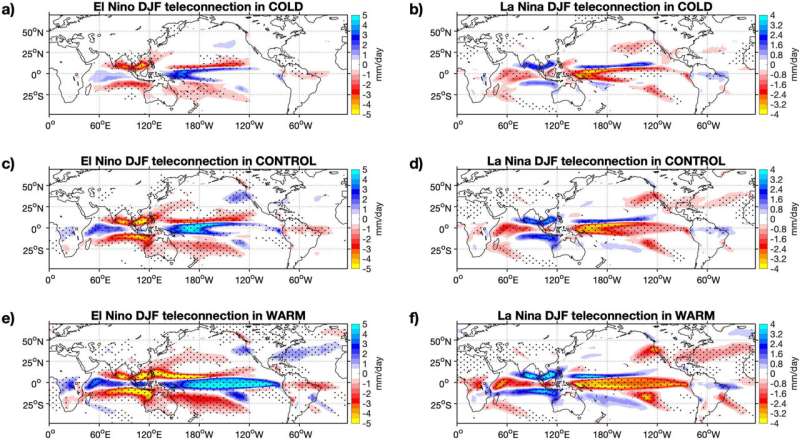July 15, 2024 report
This article has been reviewed according to Science X's editorial process and policies. Editors have highlighted the following attributes while ensuring the content's credibility:
fact-checked
peer-reviewed publication
trusted source
proofread
Climate model suggests extreme El Niño tipping point could be reached if global warming continues

A trio of physicists and oceanologists, two with the University of Cologne's Institute of Geophysics and Meteorology and the third with the GEOMAR Helmholtz Center for Ocean Research Kiel, all in Germany, has found via the CESM1 climate model that an extreme El Niño tipping point could be reached in the coming decades under current emissions.
The study by Tobias Bayr, Stephanie Fiedler and Joke Lübbecke is published in Geophysical Research Letters.
The El Niño‐Southern Oscillation (ENSO) is a climate phenomenon in which heat released in parts of the ocean into the atmosphere results in more rainfall in places like the western coast of North and South America and droughts in places like Canada and Africa. Over the past several years, weather watchers have noticed that ENSO events have become more extreme.
Prior research has shown that such extreme events used to occur approximately eight or nine times per century. Some in the field have suggested that rising global temperatures could make them happen more often.
To find out if that might be the case, the researchers gathered historical data, as well as data from other research efforts describing possible weather impacts due to rising global temperatures, and fed it to the CESM1 model then ran it under increased-temperature scenarios. Current estimates suggest that an increase of 2.9°C will occur by 2100 if greenhouse gas emissions are not stopped.
In their work, the model showed that if temperatures keep rising past 2100 to as much as 3.7°C, a tipping point could be reached where virtually all ENSO events will be extreme. Such a tipping point, they note, suggests that even if mankind was somehow able to stop climate change, it would take centuries for the weather to return to what they describe as "normal."
The model also showed that extreme ENSO events would happen more often, as well, perhaps as often as every four years. It also showed changes, such as the Gulf Stream dropping farther south, leading to far less rain in Canada and northern parts of the U.S., and more rain in southern parts of the U.S.
More information: Tobias Bayr et al, Is El Niño‐Southern Oscillation a Tipping Element in the Climate System?, Geophysical Research Letters (2024). DOI: 10.1029/2023GL107848
Journal information: Geophysical Research Letters
© 2024 Science X Network




















